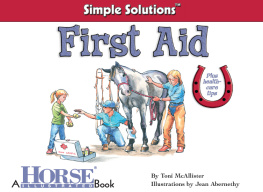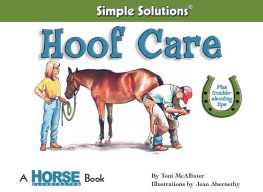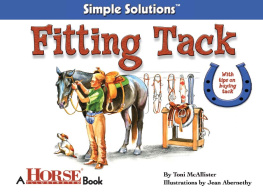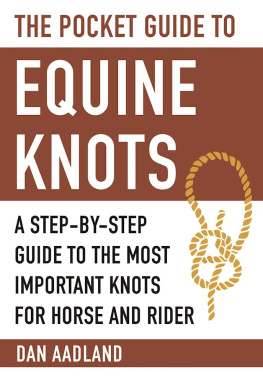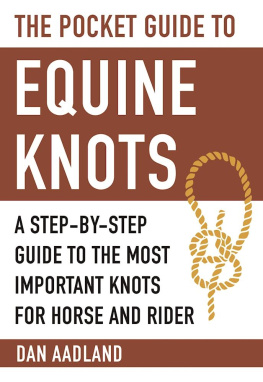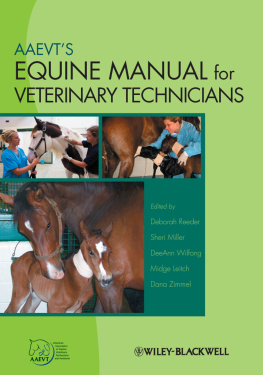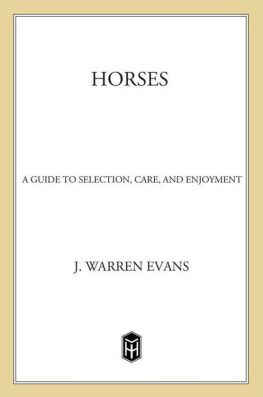Toni Mcallister - First Aid
Here you can read online Toni Mcallister - First Aid full text of the book (entire story) in english for free. Download pdf and epub, get meaning, cover and reviews about this ebook. year: 2013, publisher: CompanionHouse Books, genre: Children. Description of the work, (preface) as well as reviews are available. Best literature library LitArk.com created for fans of good reading and offers a wide selection of genres:
Romance novel
Science fiction
Adventure
Detective
Science
History
Home and family
Prose
Art
Politics
Computer
Non-fiction
Religion
Business
Children
Humor
Choose a favorite category and find really read worthwhile books. Enjoy immersion in the world of imagination, feel the emotions of the characters or learn something new for yourself, make an fascinating discovery.
- Book:First Aid
- Author:
- Publisher:CompanionHouse Books
- Genre:
- Year:2013
- Rating:5 / 5
- Favourites:Add to favourites
- Your mark:
- 100
- 1
- 2
- 3
- 4
- 5
First Aid: summary, description and annotation
We offer to read an annotation, description, summary or preface (depends on what the author of the book "First Aid" wrote himself). If you haven't found the necessary information about the book — write in the comments, we will try to find it.
Toni Mcallister: author's other books
Who wrote First Aid? Find out the surname, the name of the author of the book and a list of all author's works by series.
First Aid — read online for free the complete book (whole text) full work
Below is the text of the book, divided by pages. System saving the place of the last page read, allows you to conveniently read the book "First Aid" online for free, without having to search again every time where you left off. Put a bookmark, and you can go to the page where you finished reading at any time.
Font size:
Interval:
Bookmark:
Dedication
To Janice Posnikoff, DVM, for her years of care, guidance, and expertise.
Karla Austin, Director of Operations & Product Development
Nick Clemente, Special Consultant
Barbara Kimmel, Editor in Chief
Amy Stirnkorb, Designer
The horses in this book are referred to as she and he in alternating chapters unless their sexes are apparent from the activities discussed.
Copyright 2008 by I-5 Press
Illustrations 2008 by Jean Abernethy
All rights reserved. No part of this book may be reproduced, stored in a retrieval system, or transmitted in any form or by any means, electronic, mechanical, photocopying, recording, or otherwise, without the prior written permission of I-5 Press, except for the inclusion of brief quotations in an acknowledged review.
McAllister, Toni.
First aid / by Toni McAllister ; illustrations by Jean Abernethy.
p. cm. (Horse illustrated simple solutions)
ISBN 978-1-933958-05-7
eISBN: 978-1-620080-81-8
1. HorsesWounds and injuriesTreatment. 2. HorsesDiseasesTreatment. 3. First aid for animals. I. Abernethy, Jean. II. Title.
SF951.M435 2007
636.108960252dc22
2007012814
I-5 Press
A Division of I-5 Publishing, LLC
3 Burroughs
Irvine, California 92618
Printed and bound in Singapore
13 12 11 10 09 08 1 2 3 4 5 6 7 8 9 10
CONTENTS

First Aid Basics
E nsuring that your horse receives proper veterinary care is a basic requirement of horse ownership. At times, however, you will need to administer first aid treatment to your horse while waiting for a vet to arrive. Be prepared by compiling a well-stocked first aid kit.
First Aid Kit
Heres what you should put in your kit:
banamine (flunixin meglumine, a nonsteroidal anti-inflammatory drug)
Betadine Surgical Scrub
bucket
bute (phenylbutazone, a nonsteroidal anti-inflammatory drug)
cotton gauze bandages (assorted sizes)
duct tape (often used to wrap an injured hoof or, temporarily, one that has lost a shoe)
equine eye wash
extra lead ropes and halters
flashlight with spare batteries
gauze wrap
ichthammol (a drawing salve with anti-inflammatory, antibacterial, and antifungal properties)
Liquid Bandage
paper towels

permanent marker pen
petroleum jelly
pillow or quilt wraps
pliers
povidone-iodine
PVC tubing, six-inch diameter, in lengths of one and one-half to two feet, cut in half lengthwise, like a gutter (for emergency splinting)
rolled cotton for bandaging
sharp scissors with blunt ends
standing bandages, or wraps
sterile surgical gloves
stethoscope
stopwatch (to check heart and respiration rates)
syringe (large) to dispense oral medications
thermometer
triple antibiotic wound ointment
vet wrap or adhesive wrap
Store your first aid supplies in a pest-proof container away from extreme temperatures and direct sunlight. Keep dirt and debris out of the kit also; all items should be as sterile as possible.
Along with a well-stocked first aid kit, keep this important information handy:
veterinarians phone numbers (your primary veterinarian and a backup as recommended by your vet)
farriers phone number
phone number and address of the two nearest large-animal hospitals (make sure they treat equines)
names and phone numbers of two reliable horse people who can assist you in times of emergency (they should live close by)
fire departments phone number
911 and local police departments phone number
if you dont have your own horse trailer: names and phone numbers of at least two people who can trailer your horse for you in case of emergency
phone numbers and addresses of available boarding facilities (for emergency situations such as fire, flood, hurricane, and so on); contact these facilities on a regular basis to be sure that they are in business and can accommodate your horse
Know Your Horse
Another important element of good first aid is knowing your horse: having intimate knowledge of her normal behavior allows you to easily spot when somethings just not right. Uncharacteristic behavior can be an indication of illness. Obvious signs that your horse isnt well include lack of appetite; repeated lying down and getting back up; little or no manure output; lameness, refusal to move, or obvious stiffness; bleeding; fever; increased respiratory rate; inappropriate sweating; choking; coughing; increased nasal discharge; diarrhea; dehydration; and incoordination or stumbling.

Know Her Vital Signs
Become familiar with your horses normal vital signs so you and your veterinarian have a baseline for later comparison. Normal ranges for an adult horse at rest are:
Heart and pulse rate: 3042 beats per minute
Rectal temperature: 99.5 to 101.5 degrees fahrenheit
Respiratory rate: 1220 breaths per minute
Pulse and Respiration
A horses pulse can be felt on one of several of her arteries. Easy-to-find arteries are found on the inside edge of her lower jaw and on an inner front leg, both just above and just below her knee. Locate one of the arteries with the flat side of your fingertips. When you can consistently feel the pulse beat, count all beats for thirty seconds (youll need a stopwatch or the second hand on a clock or a wristwatch). Double this count to calculate the number of beats per minute.

Determine your horses respiration rate by watching her rib cage, flank, or nostrils for respiratory movements or by holding your hand near her nostrils and feeling her exhalations. Count the visible respiratory movements, or count the exhalations that you feel at her nostrils, for thirty seconds (again, youll need a stopwatch or the second hand on a clock or a wristwatch). Because breathing consists of inhalations and exhalations, count the exhalation only, not both; then double the respiratory count to calculate the number of breaths per minute.
Temperature
To take your horses rectal temperature, use a veterinary thermometer; the thermometer should have a loop on one end through which you can attach a string. The string allows you to easily access and remove the thermometer.

Shake down a mercury thermometer so that it reads approximately 96 degrees Fahrenheit (or clear a digital thermometer).
Lubricate the thermometer with petroleum jelly.
Stand beside the horses hip, as close as possible. Pull her tail to the side, and gently insert the thermometer into her rectum until only the loop and string are visible. If the thermometer does not easily slide into the rectum, change its angle slightly and carefully rotate it during insertion.

Font size:
Interval:
Bookmark:
Similar books «First Aid»
Look at similar books to First Aid. We have selected literature similar in name and meaning in the hope of providing readers with more options to find new, interesting, not yet read works.
Discussion, reviews of the book First Aid and just readers' own opinions. Leave your comments, write what you think about the work, its meaning or the main characters. Specify what exactly you liked and what you didn't like, and why you think so.

